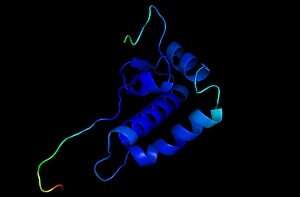
New treatments for COVID-19 may become possible thanks to 3-D models of parts of the coronavirus produced by a team of scientists, including at the University of Reading.
The detailed models of important proteins have been produced by an international team, including Reading’s Dr. Liam McGuffin. The modeling work shows the chemical and physical structure of the virus that causes COVID-19, which should help the scientific community understand how to combat the virus with new or existing drugs.
The scientific group of 52 research teams across the world has already created 1,600 three-dimensional models of parts of the SARS-CoV-2 coronavirus.
Dr. Liam McGuffin, associate professor in bioinformatics at the University of Reading, said:
“The coronavirus has been called an invisible killer. Our work helps to lift the cloak of invisibility, providing a clearer view of the virus, and helping show how we can fight it.
“Viruses are so tiny that it is very hard to know what they look like, or how they work, just by looking at them, even with powerful microscopes. Modeling the virus proteins is like breaking it down into its constituent parts and then putting it back together again to show how it works.”
The 3-D digital models they have produced can be used by scientists trying to find out more about the protein-based ‘building blocks’ of the coronavirus, which can help show what it looks like, what each part of the virus does, and how different parts interact with each other, and with human cells.
This information could be vital to scientists looking to see which existing or new drugs might combat the virus, and for those developing vaccines.
Dr. McGuffin said the modelers were showing what was going on beneath the surface of the virus:
“The outside of the coronavirus is quite well characterized structurally, but many of the proteins we want to understand are hidden away from the surface,” he said. “They are used by the virus at important points in its life cycle, as it enters human cells and replicates itself.
“We have focused on modeling parts of the virus that we knew the least about. The aim is to shine a light on these unknown proteins, for which there is little experimental data, by using cutting-edge artificial intelligence and deep learning methods to build up a detailed picture of the coronavirus, and how it works.”
Source: Read Full Article
